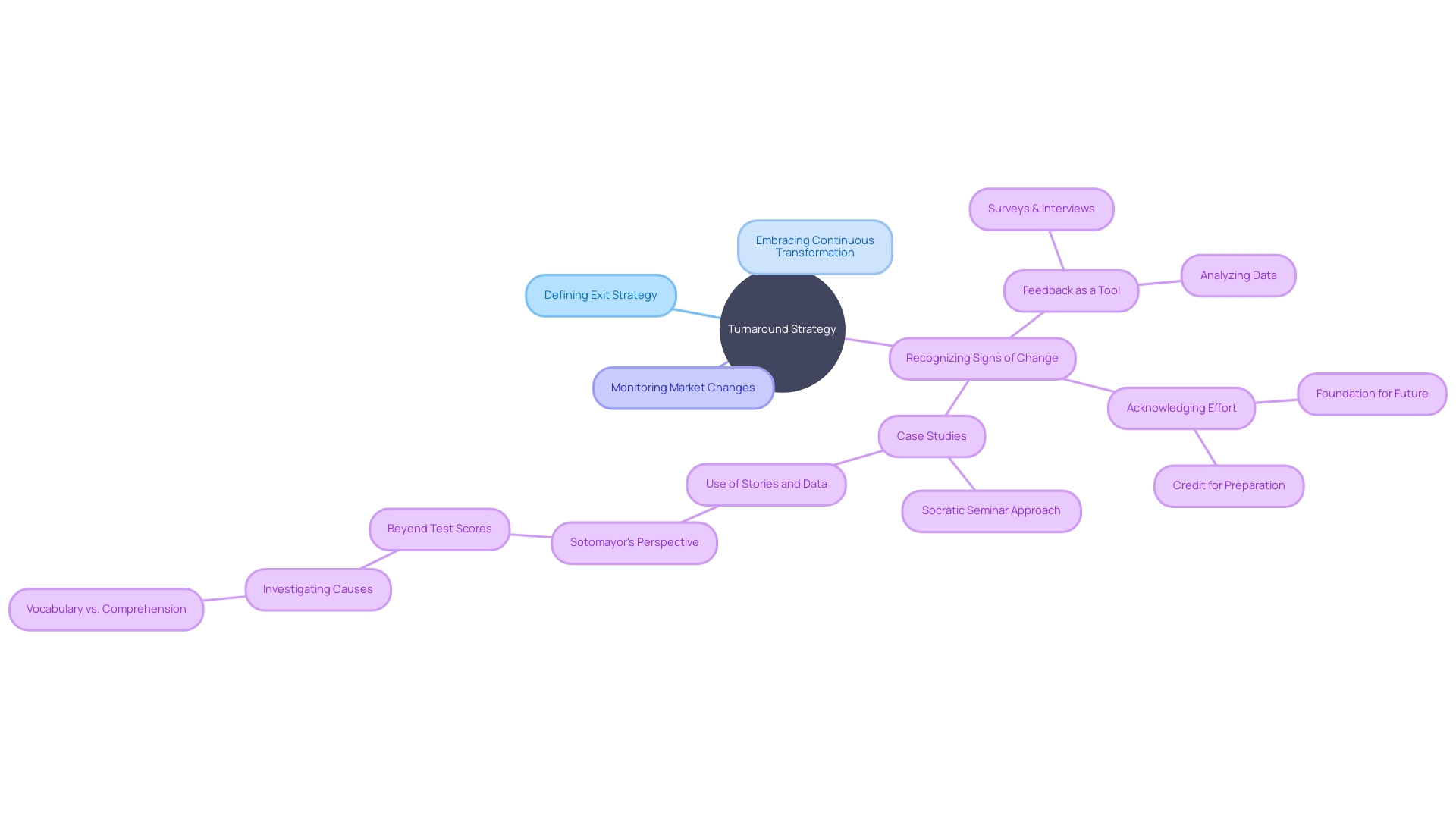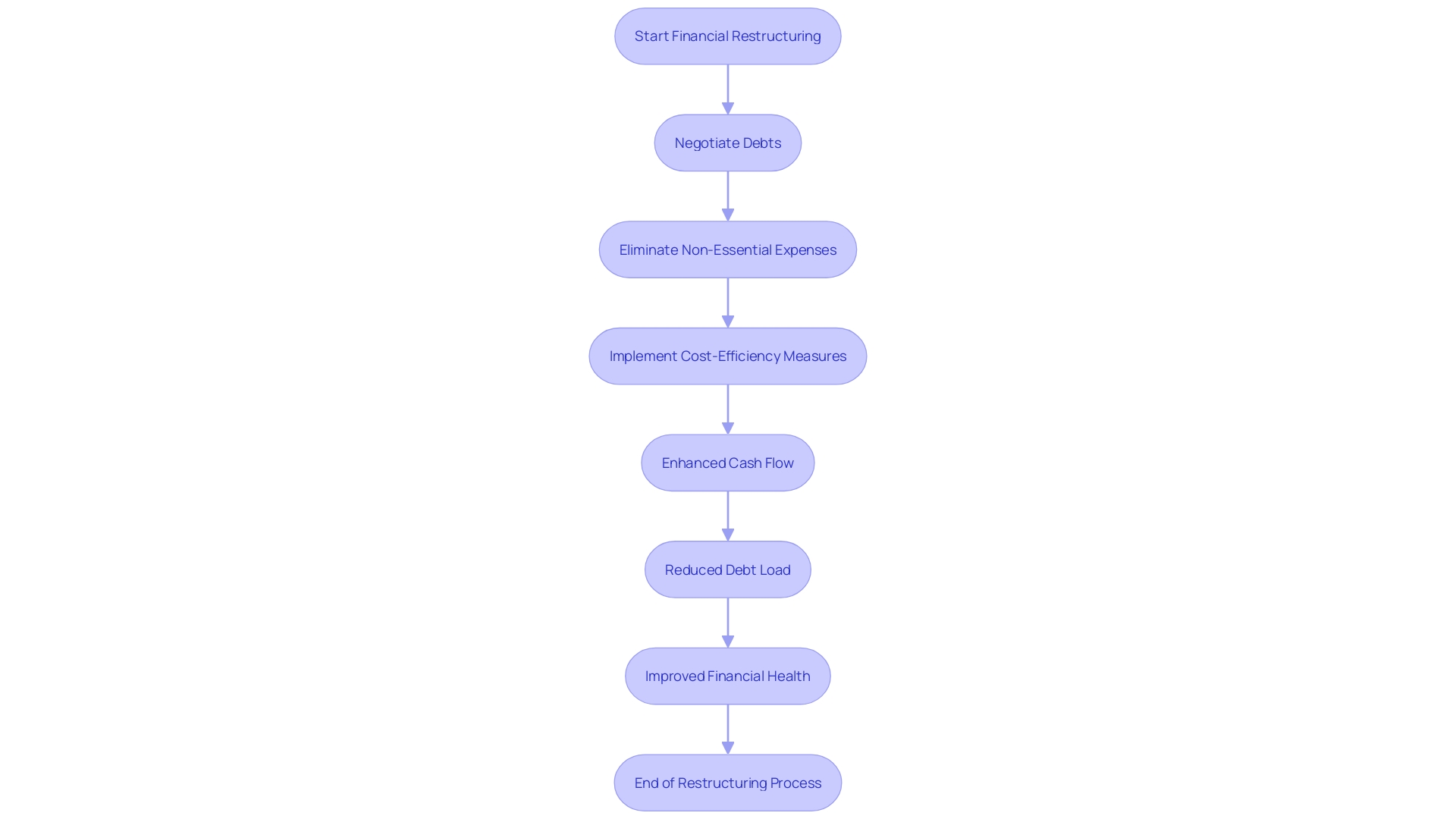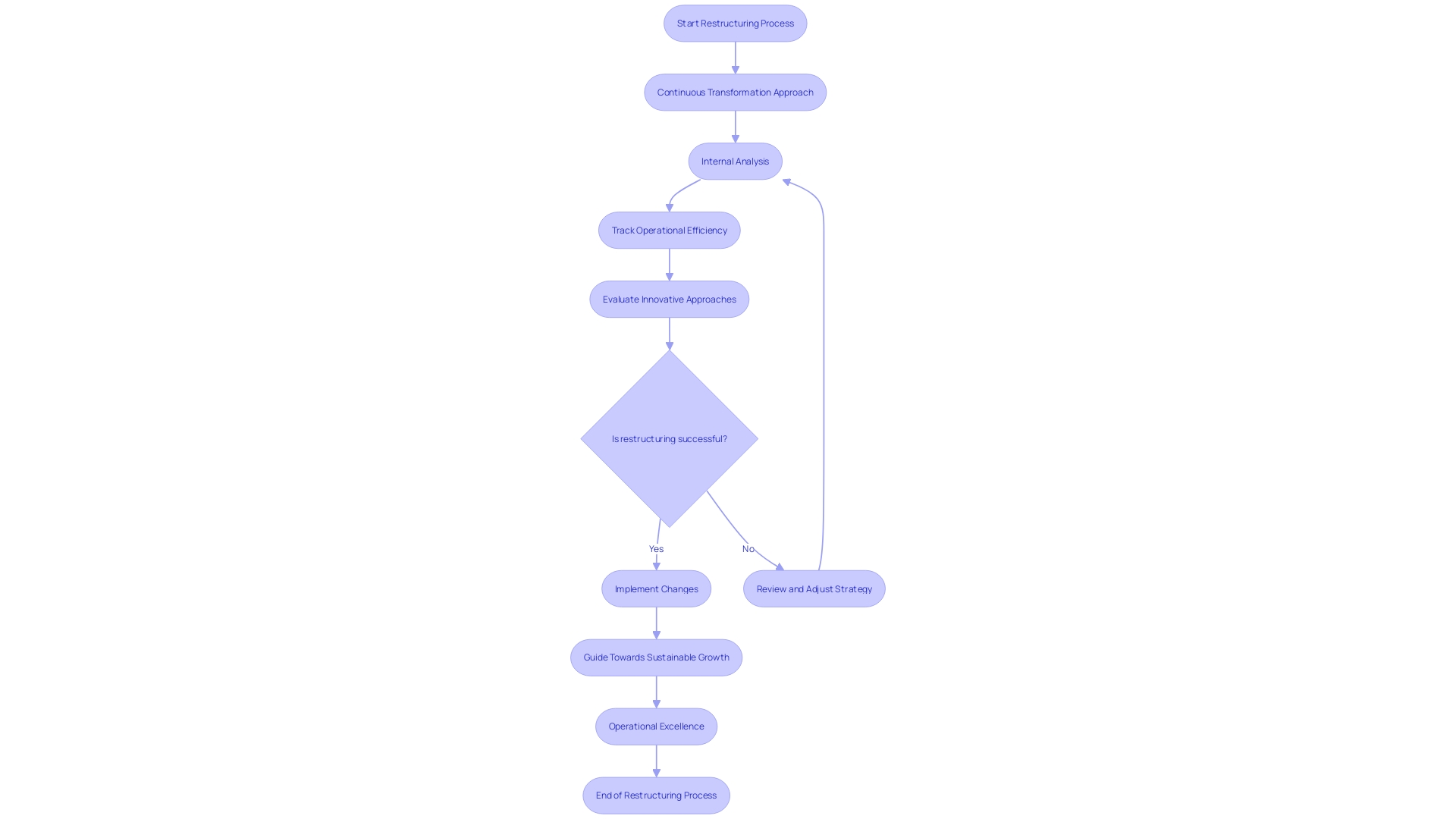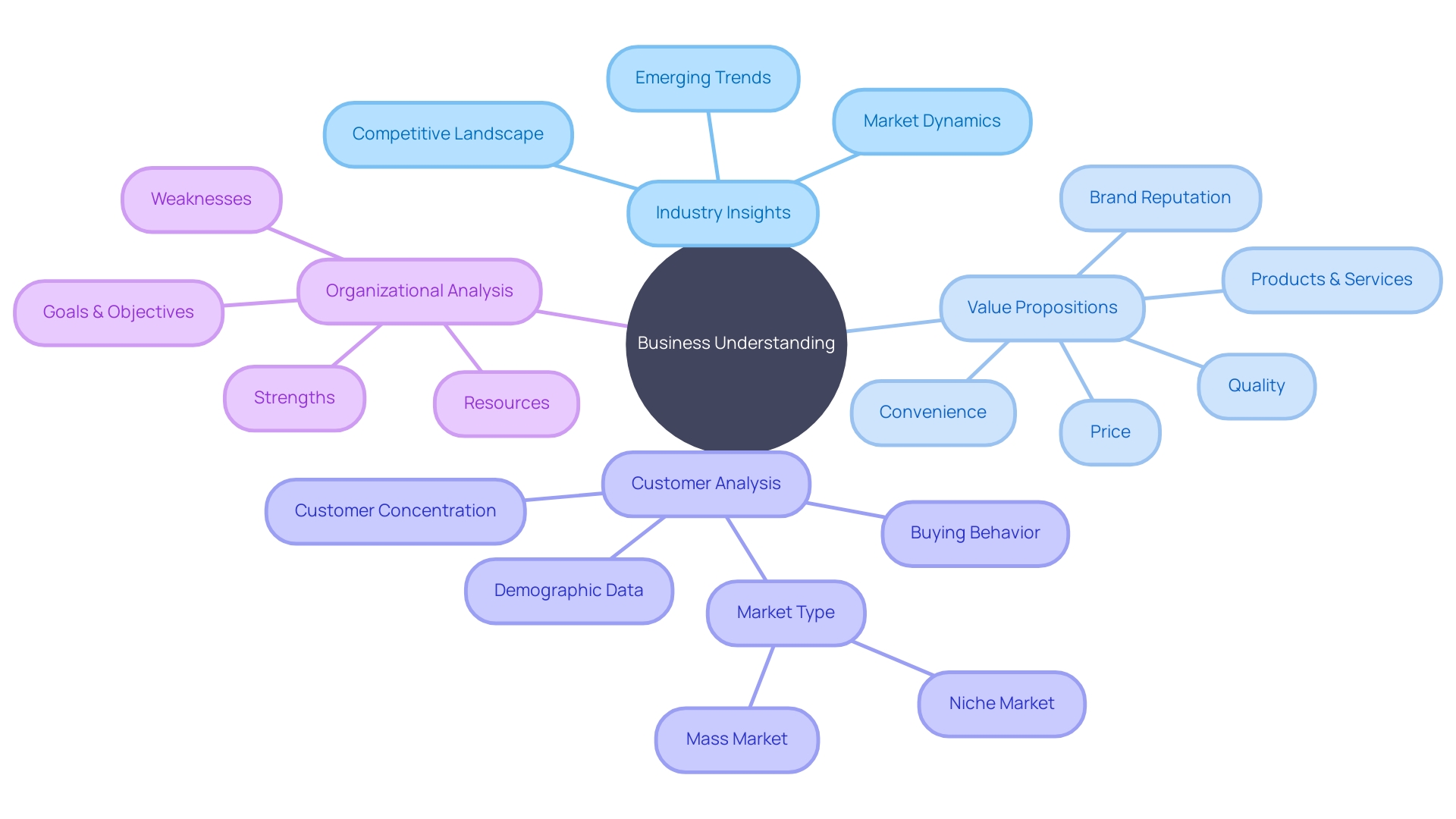Introduction
A well-executed turnaround strategy is essential for businesses facing financial turmoil. It involves rethinking strategic and operational approaches to recover and thrive in a dynamic and ever-changing business landscape. This article explores the key components of a successful turnaround strategy, including defining an exit strategy, embracing continuous transformation, monitoring market and industry changes, and recognizing the signs of change.
It also delves into the importance of financial assessment and cash preservation, operational restructuring, strategic planning and execution, leadership and change management, implementing a turnaround plan, engaging stakeholders, executing the plan with agility, monitoring and evaluating progress, and celebrating success and sustaining momentum. By following these practical and actionable insights, businesses can navigate through challenging times and emerge stronger, more resilient, and poised for long-term success.
Understanding the Importance of Turnaround Strategy
A turnaround strategy is essential for businesses facing financial turmoil. By rethinking strategic and operational approaches, companies can recover and thrive. This process is not a one-off event but a dynamic journey of continuous transformation.
A successful turnaround hinges on recognizing the need for change, embracing new behaviors, and integrating these practices into the corporate culture as a new norm, as expounded by psychologist Kurt Lewin.
For instance, a prominent hotel capitalized on its prime location to boost food and beverage sales. By understanding the market and implementing targeted strategies, the hotel saw a significant uptick in business. Similarly, IBL Group, operating in various industries and countries, adopted a balanced innovation portfolio to navigate challenging times, underscoring the importance of resilience and adaptability.
Financial stability and growth potential are interconnected. Companies may sacrifice short-term profits to fuel long-term growth, a strategy that has become the hallmark of many successful businesses, including those that have reached unicorn status. However, a sustainable unicorn not only grows but also generates operational cash flow, a testament to a sound business model and profitability.
Embracing a mindset change is the first step towards business recovery. It involves shifting from pessimism to a positive outlook, bolstered by a strategic analysis, such as a SWOT analysis, to pinpoint underlying issues. Cost management, including reducing unnecessary expenses and exploring financing options, is also crucial.
In conclusion, a well-executed turnaround strategy is not a fixed procedure but a perpetual process that demands flexibility, innovation, and a relentless pursuit of value maximization. It's a process that should be owned collectively, ensuring a balance between revenue, costs, and corporate culture.
Key Components of a Turnaround Strategy
Crafting a successful turnaround strategy is a multifaceted undertaking that demands a dynamic and holistic approach to ensure positive transformation. At the heart of this strategy lies the integration of several pivotal components:
-
Defining an Exit Strategy: Central to a successful turnaround is establishing a clear exit strategy, which could range from selling the business to taking the company public. It's a critical step that underscores the importance of preparation in mitigating business failure and capitalizing on market opportunities.
-
Embracing Continuous Transformation: Transformation is not a one-time event but a perpetual process. This is exemplified by the 'unfreeze-change-refreeze' model, which encourages creating the need for change, moving towards new behaviors, and establishing those behaviors as new norms. Recognizing that today's business environment is in a state of constant flux, the most effective strategies avoid trying to 'refreeze' and instead focus on ongoing adaptation and transformation.
-
Monitoring Market and Industry Changes: Vigilance in tracking shifts at both macro and micro levels is essential. This includes changes in the economy, technology, competition, demographics, consumer tastes, costs, material availability, government policy, and business processes. The key is to always concentrate on customer behavior and how changes will influence it, thereby enabling businesses to anticipate necessary pivots and transformations.
-
Recognizing the Signs of Change: Successful businesses stay alert to the early warning signals of change, such as economic downturns, shifts in consumer behavior, technological advancements, and environmental factors. This attentiveness is crucial for adapting the business model in response to evolving market demands.
In practice, these components come to life through case studies, like the Guthrie Clinic's holistic healthcare approach and Travel Charme Hotels & Resorts' technology-driven operational efficiency, which highlight the significance of a comprehensive and adaptable strategy. Furthermore, leveraging strategic location and the ability to attract diners was key for a branded hotel's F&B sales increase, demonstrating the importance of understanding market dynamics and customer needs.
Implementing a successful turnaround strategy requires an actionable and informed approach, integrating these core components with the specific contexts and challenges of the business in question.

Financial Assessment and Cash Preservation
At the heart of any restructuring process lies the imperative to conduct a detailed financial assessment. This critical first step involves a granular analysis of financial statements to pinpoint areas of distress. It is essential for businesses to prioritize their expenditures without resorting to immediate cost-cutting measures.
A strategic approach allows for the evaluation of all financial aspects, including both expenses and income streams, to align spending with strategic objectives and reduce unnecessary outlays.
Taking control of cash flow is like navigating through tumultuous waters—it requires a clear understanding of non-discretionary costs such as housing, insurance, and transportation. By implementing cost-saving initiatives and managing cash flow meticulously, businesses can pave their way to a more stable financial position. This not only sets the stage for potential growth but also empowers companies to tackle financial challenges proactively.
Furthermore, executives are encouraged to identify key areas that could pose significant impediments to the organization's success. Regular reviews of budgets and performance targets, re-evaluating decision-making processes, and ensuring that key individuals are adaptable to new realities can prevent the organization from stalling. Cultivating flexibility and preparedness to adjust strategies when needed is a hallmark of a resilient business, capable of weathering financial shocks and emerging stronger on the other side.
In essence, a successful restructuring process is underpinned by a comprehensive budget examination, judicious prioritization, and an agile approach to financial management. These steps provide a robust foundation for preserving cash, reducing liabilities, and setting a clear course for future growth.

Operational Restructuring
Operational restructuring in the hospitality industry, such as the case with Travel Charme Strandhotel Bansin, involves leveraging technology to refine operations and increase efficiency. Through such measures, including reevaluation of supply chains and adoption of Lean principles, organizations streamline workflows and bolster productivity. This not only cuts costs but also aligns with customer expectations, ensuring a seamless guest experience.
Incorporating real-time feedback mechanisms further tightens operational loops, allowing for agile responses to market demands. These strategic operational adjustments are crucial for businesses to adapt to economic pressures, such as those highlighted by Christine Lagarde regarding inflation, and to maintain a competitive edge in today's dynamic business landscape.

Strategic Planning and Execution
Crafting a winning turnaround strategy transcends mere planning; it requires a holistic approach that encompasses strategic vision as well as meticulous execution. This approach begins with a thorough analysis of the company's inherent strengths and unique value proposition. It's about pinpointing what sets the business apart in a competitive marketplace and leveraging that to carve a sustainable path forward.
To illuminate this, consider Toyota's Woven Planet endeavor. Initially, the project's ambition was to develop groundbreaking automotive software—envisaging a future where vehicles are interconnected and software-dependent. However, the initiative faltered not due to the vision but because of execution that didn't align with Toyota's need for immediate, tangible software advancements.
The lesson here is that vision must be tempered with operational realities.
An operational plan serves as the backbone of strategic execution. It defines the company's structure, its leadership, and its offerings, all while outlining the strategies for marketing and sales. It's an indispensable tool for businesses of any size, acting as a guidepost for strategy implementation and providing checkpoints to measure progress.
Moreover, the operational plan is a critical document for attracting investment, particularly for startups and companies in scaling mode. It demonstrates to investors and lenders a clear trajectory for growth and a commitment to structured strategic advancement.
To foster adaptability, it's crucial to anticipate and prepare for the changes that the next five years may bring. This could mean reevaluating KPIs, streamlining decision-making processes, or acknowledging when a pivotal change in direction is required. For instance, rapid technological advancements or shifts in consumer behavior could alter the business landscape significantly, necessitating a revised playbook.
Ultimately, a successful strategy is a blend of clear objectives, an innovative yet achievable strategy, continuous development, and a detailed action plan. Each component must be thoughtfully considered and closely managed to ensure that the strategy not only aligns with long-term goals but is also responsive to the ever-evolving market dynamics.

Leadership and Change Management
At the core of a successful restructuring process, effective leadership is paramount. Leaders must not only envision and articulate the direction of change but also foster an environment that supports the transformation. This includes providing clarity on the necessity of change and its potential impact, thus reducing anxiety and resistance among employees.
Emphasizing the distinction between Change Leadership and Change Management is vital: the former drives large-scale, transformative changes, ensuring swift and innovative implementation, while the latter focuses on smaller, incremental changes, aiming for cost-effectiveness and minimal disruption.
Understanding the unique dynamics of each transformation is crucial. For instance, digital transformations, which have been adopted by approximately 89 percent of organizations, involve a deep change encompassing people, process, and technology, with a spend exceeding $3 trillion expected by 2030. However, a staggering 70 percent of these initiatives fail to meet their objectives, highlighting the significant risk involved.
Communicating effectively throughout the change process is essential. This involves identifying the information needs of stakeholders and tailoring the communication approach accordingly, whether it's in-depth updates for certain groups or high-level summaries for others. Moreover, change management should be viewed as a two-phased approach: first, from the initiation to the completion of the transformation, and second, ensuring the change is sustained long-term.
Real-world examples further illustrate these principles. For instance, the Guthrie Clinic's holistic healthcare approach reflects comprehensive change, tying in community well-being initiatives. On the other hand, a branded hotel's strategy to leverage location for increasing sales underscores the importance of understanding market needs and employing a multi-disciplinary approach for change.
In summary, leaders must be transparent about the reasons for change, the impact, and the expected outcomes. They should avoid over-communicating but instead provide the right balance, frequency, and clarity of updates, all while considering the cultural nuances of the organization. As Tim Creasey of Prosci emphasizes, success is sown early in the change process, which requires a clear and shared definition of success from the start.
With these strategies, leaders can dramatically increase the chances of a successful restructuring process.
Implementing a Turnaround Strategy
For a successful restructuring process, it's crucial to first thoroughly evaluate the company's current financial health. This initial step, akin to a diagnostic phase, involves a comprehensive review of the financial statements to understand the depth of the situation. The transformation journey should then follow a structured path, much like the ADKAR model, which stands for Awareness, Desire, Knowledge, Ability, and Reinforcement.
This model guides through the change management process effectively.
Embracing transparency throughout the restructuring process cannot be overstated. It's vital to clearly communicate financial statuses, obstacles, and objectives with the team. When team members are included in the conversation and understand the rationale behind changes, they're more likely to offer their support and cooperation.
The next phase is to create a dynamic and resilient culture that can adapt to ongoing changes, as the business landscape is continuously evolving. This means preparing for a future that may not resemble the past, as pointed out by industry experts who highlight the rapid technological advancements and shifting consumer behaviors.
Furthermore, it’s essential to recognize that transformation is not a one-time event but a perpetual process. The traditional 'unfreeze-change-refreeze' model is now obsolete in the current dynamic business environment. Continuous transformation is the new norm, and companies should strategize accordingly.
Finally, learning from other industries can provide valuable insights. For instance, a major hotel leveraged its prime location to boost food and beverage sales, which underscores the importance of knowing your market and using strategic location to your advantage. Similarly, tech giant Apple exemplifies constant innovation and a steadfast commitment to sustainability, setting a benchmark for continuous improvement and corporate responsibility.

Assess the Current Situation
To orchestrate a successful business restructuring, it is imperative to commence with a meticulous analysis of the company's current state. This analytical phase delves into the financial performance, pinpoints prevailing issues, and unravels the fundamental causes of the organization's adversities. Such a comprehensive evaluation is pivotal, providing a foundation upon which to construct bespoke solutions and informed strategic decisions.
Reflecting on the continuous transformation paradigm, where change is an ongoing pursuit rather than a finite project, businesses must adapt to a dynamic economic landscape by perpetually aligning their strategies. This agile approach, as opposed to the traditional "unfreeze-change-refreeze" model, ensures that companies remain resilient and responsive in a marketplace where permanence is illusory.
Undertaking an internal analysis is not merely an exercise in scrutiny but a strategic tool that equips businesses to make pivotal operational changes, attract new investors, or prepare for acquisition. It encompasses a thorough assessment of the company's resources, capabilities, strengths, and weaknesses. This holistic view elucidates the drivers behind the company's success and the obstacles to its growth, thereby enabling the development of a strategy that resonates with the company's actuality.
In light of recent statistics indicating a rise in company insolvencies, such discerning insights into business operations can be the difference between faltering and flourishing.
As businesses navigate through tumultuous times, the words of those experienced in the small business sector echo profoundly. It is often noted that during economic downturns, the instinctive response is to retract and conserve. However, it is precisely in these moments that businesses should consider a more audacious path, proactively investing in marketing, training, and innovation to emerge robustly when the economic climate shifts.
To this end, identifying a handful of critical focus areas for improvement can lead to significant organizational advancement, ensuring adaptability and the ability to pivot strategies swiftly when necessary.

Develop a Turnaround Plan
To orchestrate a successful restructuring process in the face of financial adversity, it is imperative to devise a robust turnaround strategy with precise objectives, tactics, and a sequence of actions. This strategic blueprint must delineate the necessary resources and set definitive timelines for execution. Such a meticulous approach is exemplified by Stora Enso, a paper manufacturer that reimagined itself as a leader in renewable materials amidst declining demand for traditional paper products.
Similarly, in today's dynamic business landscape, the 'unfreeze-change-refreeze' model, although historically effective, now requires continuous adaptation, as static transformations are no longer viable. Leaders must maintain flexibility and readiness to pivot, as evidenced by Mitchell Gold + Bob Williams' unfortunate need to close operations due to unforeseen financial setbacks. An effective plan anticipates potential obstacles, such as unrealistic KPIs or decision-making bottlenecks, and emphasizes change management by involving people at every stage to ensure the envisioned transformation materializes.
Only through such an integrated and people-centric approach can an organization navigate the complexities of bankruptcy and emerge resiliently.

Engage Stakeholders
To successfully orchestrate a restructuring process, engaging with stakeholders is not just important, it's a pivotal element of the strategy. This means establishing a clear and transparent line of communication with employees, investors, creditors, and other vital stakeholders. Their support, understanding, and active commitment are the linchpins of a successful turnaround.
Just as Stora Enso, a historic paper manufacturer, shifted its focus towards renewable materials amidst declining demand for paper, the company recognized the need to pivot towards emerging market trends. The transformation involved difficult decisions, such as significant layoffs and a change in leadership, but it was the clear communication and alignment with stakeholders about the rationale behind the move that underpinned its success.
In tandem with the rise of social media, stakeholder influence has soared, making their engagement even more critical for credibility, reputation, and strategic agility. A lesson mirrored in the Global Circularity Protocol for Business, emphasizing the importance of stakeholder involvement in corporate accountability and sustainability efforts. Moreover, as seen in the Ranger mine rehabilitation managed by Rio Tinto, leveraging expertise and a reputation for meticulous project management can forge stakeholder trust and yield potential cost savings.
When contemplating a restructuring process, it's essential to consider the two phases of change management: setup and execution. The questions of when to act, the balance of revenue, cost, and culture, and ownership of the transformation process are vital. These were insights shared by industry experts like Roman Regelman, who stressed the importance of readiness and collective ownership.
Similar wisdom comes from data science, where deployment success rates are contingent on understanding the broader context—goals, challenges, and the future. This is crucial for CFOs leading restructuring efforts, as evidenced by surveys from the Machine Learning Week conference.
Lastly, the five truths highlighted in recent research reiterate the impact of proactive leadership. Starting a transformation while on par or ahead of industry averages has shown to yield a more favorable outcome compared to those who delay. Regular, transparent communications, a people-centric mindset, and a strategic, action-oriented approach to stakeholder engagement are therefore the cornerstones of a successful restructuring process.
Execute the Plan with Agility
Executing a turnaround plan requires more than just a set of strategies; it demands agility and a keen eye for operational excellence. Successful execution hinges on the ability to swiftly implement action steps, diligently monitor progress, and make timely adjustments. As emphasized by Mathew Lehnig, "During business reorganization, constant change is inevitable.
Although uncertain and complex, we must remain agile and adaptable to ensure the desired outcomes." This sentiment is echoed in the story of a major hotel that, by recognizing the need to adapt its strategy to its central location, saw a notable increase in food and beverage sales. Similarly, TBC Bank's agile transformation, aimed at reducing complexity for growth, serves as a testament to the power of nimble operations.
In practical terms, agility might involve embracing Sales & Operations Execution (S&OE) within an Integrated Business Planning (IBP) framework to manage short-term uncertainties. This approach has proven effective in aligning long-term goals with immediate operational activities, as highlighted by Stephen Dombroski of QAD. Additionally, the principle of dynamic process transformation calls for an open market mindset, where operations must not only comply with mandates but also respond to market forces and benchmarks.
Moreover, statistics reveal the stark reality faced by startups: 70 percent fail due to scaling inefficiencies, underscoring the critical nature of execution. The lesson is clear: to navigate the complexities of a restructuring process, one must stay flexible, be prepared to iterate, and remain steadfast in pursuit of the ultimate goal—transformative success.

Monitor and Evaluate Progress
The essence of a successful restructuring process hinges on our ability to meticulously monitor and evaluate progress through the lens of key performance indicators (KPIs) and other vital financial metrics. It's not merely about implementing changes, but about rigorously assessing their impact and ensuring that any discrepancies are promptly addressed. The analogy here could be drawn from the health sector, where Rwanda's commitment to digital health platforms, such as electronic medical records, demonstrates the power of regular data review in enhancing care quality and compliance, particularly in critical areas like cervical cancer treatment.
Similarly, in the financial realm, we must adopt a dynamic approach to our restructuring strategies, akin to the checks and balances underscored by the Un's High-Level Political Forum. This forum emphasizes the importance of regular assessment and action to address global challenges. We should draw inspiration from this model to foster accountability and credibility within our organizations, ensuring that our efforts are not just about adopting new technologies or processes, but about achieving measurable advancements in efficiency, customer satisfaction, and financial health.
To quote an expert on the matter, 'Effort is the work, resources, and energy put into driving change... Progress means measurable advancements and tangible results from your efforts.' This perspective cements the idea that while effort is indispensable, it must translate into quantifiable progress to be deemed successful.
The key takeaway for CFOs is to remain vigilant, constantly reviewing the implemented changes against robust metrics to detect and rectify any deviations swiftly. This will ensure that the restructuring journey stays on course, leading to a resilient and revitalized financial structure.

Celebrate Success and Sustain Momentum
As a business revolutionizes its trajectory, it's crucial to acknowledge and celebrate every success along the way. Commemorating achievements, whether they're monumental or minor, plays a pivotal role in uplifting morale and inspiring continued dedication among team members. Moreover, it's vital to maintain the forward momentum by persistently honing the strategies that have been put into place and by ensuring these strategies are deeply ingrained within the corporate ethos and daily practices.
A testament to the power of recognizing success can be seen in the hospitality industry. For instance, a well-known hotel chain with a city-center location managed a significant uplift in food and beverage sales by tailoring their strategy to harness their prime location, thereby attracting more customers. The hotel's approach underscores how understanding the market is paramount in driving business success.
Furthermore, according to research, companies that can sustain their operations without constant capital injections are rare yet exemplary; they demonstrate that creating a self-sufficient business is an attainable goal. Celebrations and positive reinforcement can contribute to this sustainability by reinforcing a culture of community and shared success, as highlighted by the overwhelming positive response to a company event that honored the collective efforts of its employees.
To maintain this upward trajectory, it is essential to adopt a 'Ruthlessly Constructive' mindset. This involves fostering a culture where open, positive criticism is not only accepted but encouraged, to collaboratively develop solutions that benefit the organization. The goal is to achieve Predictable Success, where the organization thrives on a balance of innovation and efficiency.
In conclusion, the journey through revitalization is not solely about the strategies implemented but how these strategies are embraced and sustained by the entire organization. Recognizing the hard work of employees, ensuring continuous improvement, and instilling a culture of constructive criticism are all critical in solidifying a successful restructuring process.
Conclusion
A successful turnaround strategy is crucial for businesses facing financial turmoil. By rethinking strategic and operational approaches, companies can recover and thrive. This process involves recognizing the need for change, embracing new behaviors, and integrating them into the corporate culture as a new norm.
Key components of a successful turnaround strategy include defining an exit strategy, embracing continuous transformation, monitoring market and industry changes, and recognizing the signs of change. Financial assessment, cash preservation, operational restructuring, strategic planning and execution, leadership, change management, engaging stakeholders, executing the plan with agility, monitoring progress, and celebrating success are all important aspects.
To navigate through challenging times and emerge stronger, businesses must prioritize evaluating their financial health, embracing transparency, and creating a dynamic and resilient culture. Engaging stakeholders, executing the plan with agility, monitoring and evaluating progress, and celebrating success are crucial for sustained momentum and long-term success.
By following these practical insights, businesses can navigate through challenging times and emerge stronger, more resilient, and poised for long-term success. The journey through revitalization requires embracing change, recognizing the hard work of employees, ensuring continuous improvement, and fostering a culture of constructive criticism. These elements are key to solidifying a successful restructuring process.




